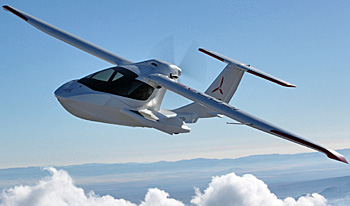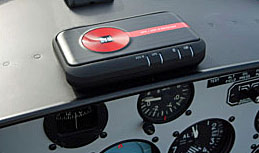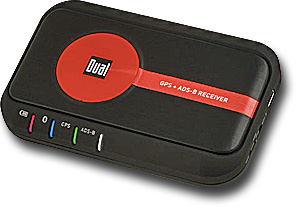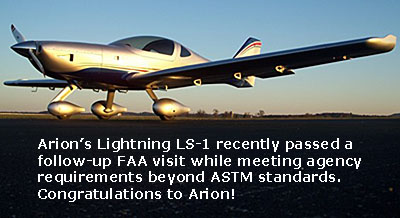
In this post I’m going to do something potentially risky. I am going to make some statements about the politics of aircraft certification. While rather dull, this subject is nonetheless something pilots and others feel rather strongly about as the safety of aircraft — for persons in or under aircraft — is involved. Doesn’t everyone except a handful of thrill seekers care deeply about safety? I certainly do yet I feel it’s time for some new directions. I fully expect not everyone will agree, but I feel strongly that these statements need to be made. So, here goes … My term as Membership Secretary of ASTM’s F37 LSA committee will complete later this year; I will be term limited out. That’s perfectly fine … I’ve done my duty for several years. ASTM’s F37 committee is the group that wrote and updates the standards used to gain acceptance for Light-Sport Aircraft. F37 is populated by some exceptional people that are largely unsung heroes for all the hard work they’ve done with little recognition.



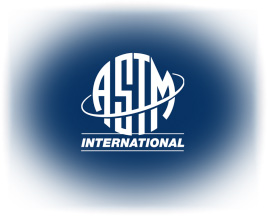
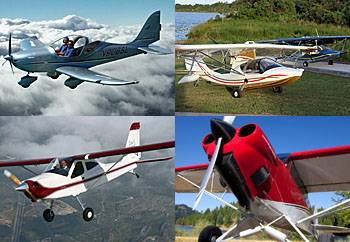
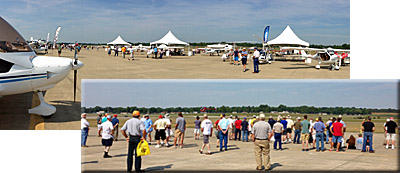
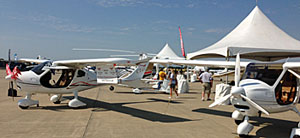





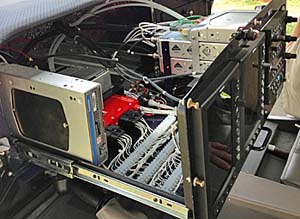
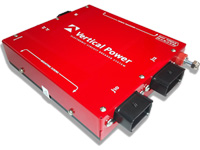

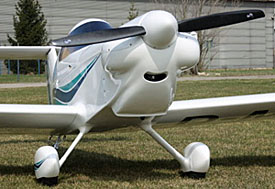
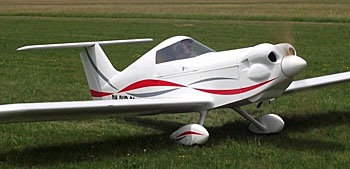
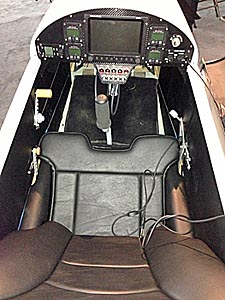
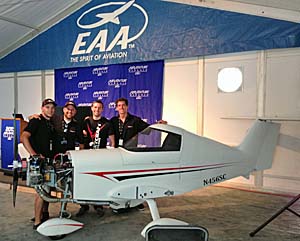



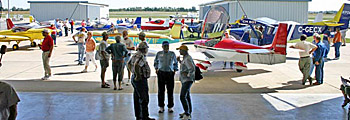

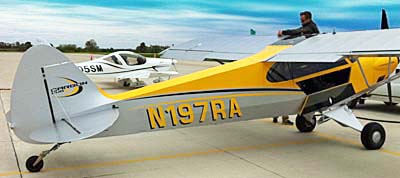 Elements are basic components of nature. As in our first part, I see Oshkosh Elements as fascinating ideas other than airframes or engines. One such worthy idea is Beringer's new anti-groundloop tailwheel. Before we talk about their innovation, though, let's take a quick glance at tailwheel design popularity. Cub-like models and other taildraggers account for more than 20% of the LSA fleet today. Tricycle gear may dominate but lots of pilots believe a tailwheel aircraft is the "proper" gear for an airplane with more machismo, more bush-capability, more aerodynamic efficiency (less drag) ... you name it, many pilots just love taildraggers. Tricycle gear pilots, however, not so much. The reason? Trigear landings tend to self correct regarding keeping the airplane straight on the runway. Tailwheel aircraft threaten the dreaded ground loop. Since this sounds — and can be — scary, lots of Cessna or Piper-trained pilots avoid flying taildraggers.
Elements are basic components of nature. As in our first part, I see Oshkosh Elements as fascinating ideas other than airframes or engines. One such worthy idea is Beringer's new anti-groundloop tailwheel. Before we talk about their innovation, though, let's take a quick glance at tailwheel design popularity. Cub-like models and other taildraggers account for more than 20% of the LSA fleet today. Tricycle gear may dominate but lots of pilots believe a tailwheel aircraft is the "proper" gear for an airplane with more machismo, more bush-capability, more aerodynamic efficiency (less drag) ... you name it, many pilots just love taildraggers. Tricycle gear pilots, however, not so much. The reason? Trigear landings tend to self correct regarding keeping the airplane straight on the runway. Tailwheel aircraft threaten the dreaded ground loop. Since this sounds — and can be — scary, lots of Cessna or Piper-trained pilots avoid flying taildraggers.
 Several other reporters covered
Several other reporters covered 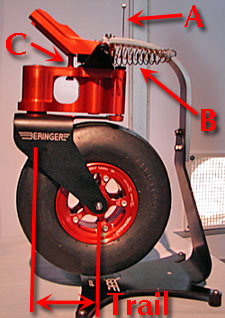 Another journalist, AIN's Matt Thurber, wrote: "On normal tailwheel designs, the pivot axis of a steerable tailwheel is offset from the wheel axis, and the distance between the two is called the trail (illustrated photo), according to engineer Claire Beringer. "When you increase this [trail], maneuverability increases but stability decreases." While pilots appreciate the trail feature that allows the tailwheel to pivot for improved ground handling, if there is a disturbance during landing, such as a crosswind gust, the force on the tailwheel tends to cause the wheel itself to [steer] just when it would be more helpful for the pilot if the wheel were to remain straight. "The [tailwheel] spring is not strong enough to retain the tailwheel in its axis," she said. With the wheel in the locked position, the wheel can't pivot but can still be used to steer a limited amount right or left. By pulling a cable in the cockpit (simulated by "A"), the pilot adds the trail to the tailwheel assembly, which can then pivot in any direction."
Another journalist, AIN's Matt Thurber, wrote: "On normal tailwheel designs, the pivot axis of a steerable tailwheel is offset from the wheel axis, and the distance between the two is called the trail (illustrated photo), according to engineer Claire Beringer. "When you increase this [trail], maneuverability increases but stability decreases." While pilots appreciate the trail feature that allows the tailwheel to pivot for improved ground handling, if there is a disturbance during landing, such as a crosswind gust, the force on the tailwheel tends to cause the wheel itself to [steer] just when it would be more helpful for the pilot if the wheel were to remain straight. "The [tailwheel] spring is not strong enough to retain the tailwheel in its axis," she said. With the wheel in the locked position, the wheel can't pivot but can still be used to steer a limited amount right or left. By pulling a cable in the cockpit (simulated by "A"), the pilot adds the trail to the tailwheel assembly, which can then pivot in any direction."
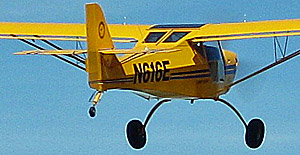 Summarizing then, aviation has three possibilities for taildraggers since the old tail skid: a tailwheel in fixed or locked position; the classic trailing, steerable tailwheel; and the new best choice: Beringer's no-trail innovation. With the latter, the pilot enjoys full movement while taxiing to the runway, sets the knob or lever (depending on how the kit builder or manufacturer implements this) to "lock" the tailwheel into limited steering for take off, and leaves it that way throughout landing. When ready to taxi back to parking, the pilot "unlocks" the tailwheel and again has broad steering control. Short of gross pilot error, Beringer's creation virtually eliminates the chance of the dreaded ground loop. Now pilots who grew up flying trigear airplanes can lose their fears and perhaps try a fun tailwheel aircraft design. Well done, Beringer!
Summarizing then, aviation has three possibilities for taildraggers since the old tail skid: a tailwheel in fixed or locked position; the classic trailing, steerable tailwheel; and the new best choice: Beringer's no-trail innovation. With the latter, the pilot enjoys full movement while taxiing to the runway, sets the knob or lever (depending on how the kit builder or manufacturer implements this) to "lock" the tailwheel into limited steering for take off, and leaves it that way throughout landing. When ready to taxi back to parking, the pilot "unlocks" the tailwheel and again has broad steering control. Short of gross pilot error, Beringer's creation virtually eliminates the chance of the dreaded ground loop. Now pilots who grew up flying trigear airplanes can lose their fears and perhaps try a fun tailwheel aircraft design. Well done, Beringer!
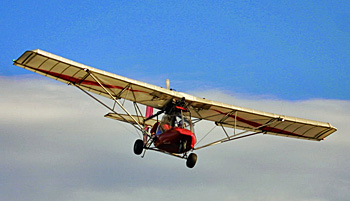



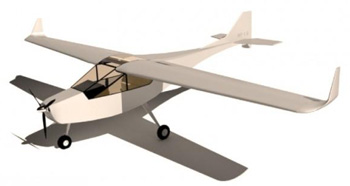



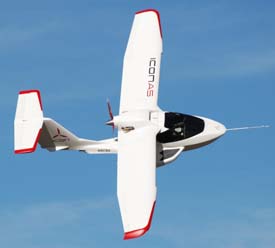 Opening day at AirVenture Oshkosh 2013 and the very first announcement before exhibit spaces even opened was a press conference from Icon Aircraft. To a media-only group of perhaps 30 or 40 media personalities, CEO Kirk Hawkins began, "Is there anyone here who doesn't know what this about?" No one responded; everyone knew what the rumor mill had begun spewing. Icon is in good company. Even premiere new product secret-keeper, Apple Inc., has trouble announcing something that no one expected. Yet a few comments from the top gun at Icon were of special interest. One other observation first: it was a media event, but if even a single FAA person was in attendance, they were under cover. No FAA shirts or badges could be spotted. Thus Icon made their announcement without any active FAA participation.
Opening day at AirVenture Oshkosh 2013 and the very first announcement before exhibit spaces even opened was a press conference from Icon Aircraft. To a media-only group of perhaps 30 or 40 media personalities, CEO Kirk Hawkins began, "Is there anyone here who doesn't know what this about?" No one responded; everyone knew what the rumor mill had begun spewing. Icon is in good company. Even premiere new product secret-keeper, Apple Inc., has trouble announcing something that no one expected. Yet a few comments from the top gun at Icon were of special interest. One other observation first: it was a media event, but if even a single FAA person was in attendance, they were under cover. No FAA shirts or badges could be spotted. Thus Icon made their announcement without any active FAA participation.
 Icon received Grant of Exemption No. 10829 for a
Icon received Grant of Exemption No. 10829 for a 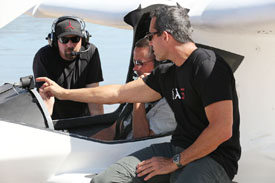 More structure on wings and tail was needed to achieve the SRA and that drove the request for weight exemption, Hawkins added. However, Icon said they do not plan to use all 1,680 pounds they could under the exemption. In their press conference, the company mentioned a target weight of 1,510 pounds, only 80 more than allowed for seaplanes without an exemption. These and other refinements mean that the price will rise from $139,000 (in 2009 dollars) to a starting price of $189,000 but you'll get more airplane in the form of the costlier fuel injected
More structure on wings and tail was needed to achieve the SRA and that drove the request for weight exemption, Hawkins added. However, Icon said they do not plan to use all 1,680 pounds they could under the exemption. In their press conference, the company mentioned a target weight of 1,510 pounds, only 80 more than allowed for seaplanes without an exemption. These and other refinements mean that the price will rise from $139,000 (in 2009 dollars) to a starting price of $189,000 but you'll get more airplane in the form of the costlier fuel injected 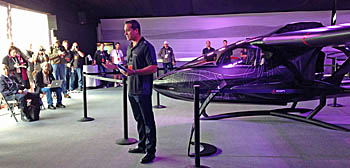 The results: Icon will immediately increase the current effort to prepare for production. On a large projection screen they showed a handsome computer-imagery video of a production facility full of A5s being built. It's all animation but it was done with the style we've come to expect from the Southern California company. So, the exemption has been granted and at least three other companies told me within 15 minutes they will also prepare a request based on safety features (but see Update below). FAA may not grant them all — they may not be adequately prepared and documented — but the agency has to at least review them and in a period of budget constraint, these requests will surely take plenty of time and could consume time from FAA personnel. Despite such potential hiccups, Hawkins felt Icon's grant of exemption was a positive for the whole LSA industry and many, though not all, are inclined to agree.
The results: Icon will immediately increase the current effort to prepare for production. On a large projection screen they showed a handsome computer-imagery video of a production facility full of A5s being built. It's all animation but it was done with the style we've come to expect from the Southern California company. So, the exemption has been granted and at least three other companies told me within 15 minutes they will also prepare a request based on safety features (but see Update below). FAA may not grant them all — they may not be adequately prepared and documented — but the agency has to at least review them and in a period of budget constraint, these requests will surely take plenty of time and could consume time from FAA personnel. Despite such potential hiccups, Hawkins felt Icon's grant of exemption was a positive for the whole LSA industry and many, though not all, are inclined to agree.
 "A weight increase was not a factor in granting Icon's request for exemption," a senior FAA executive told the board members. Instead, the agency "rewarded" Icon with a weight increase because they felt the company had achieved a highly stall resistant wing design to avoid the reason for 70% of fatalities, namely stall/spin.
"Any company that addresses this [stall-resistant airframe] can also get the exemption but they must prove their solution." Such an aircraft must still meet all parameters of an LSA, specifically the stall speed, max speed ... everything except weight.
"FAA would obviously love for all LSA to be stall resistant," because this could save lives. Requests for a weight allowance for parachutes, safety belt airbags, fire extinguishers and other safety gear are very unlikely to get a positive reply.
"A weight increase was not a factor in granting Icon's request for exemption," a senior FAA executive told the board members. Instead, the agency "rewarded" Icon with a weight increase because they felt the company had achieved a highly stall resistant wing design to avoid the reason for 70% of fatalities, namely stall/spin.
"Any company that addresses this [stall-resistant airframe] can also get the exemption but they must prove their solution." Such an aircraft must still meet all parameters of an LSA, specifically the stall speed, max speed ... everything except weight.
"FAA would obviously love for all LSA to be stall resistant," because this could save lives. Requests for a weight allowance for parachutes, safety belt airbags, fire extinguishers and other safety gear are very unlikely to get a positive reply.
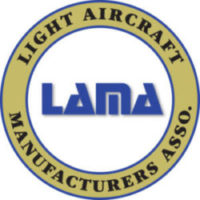 Beyond the weight increase, FAA allows 100 kilowatts (KW) of power or about 135 horsepower. However, this is a firm limit. Any LSA with more than 100 KW of power must remain a non-exempted LSA and cannot weigh more than the current 1,320 or 1,430 pound weights (600 and 650 kg).
FAA also noted that a pilot with a Sport Pilot certificate could fly an exempted airplane up to 1,680 pounds with 135-hp and that a Light Sport Repairman could work on such an Light-Sport Aircraft.
Beyond the weight increase, FAA allows 100 kilowatts (KW) of power or about 135 horsepower. However, this is a firm limit. Any LSA with more than 100 KW of power must remain a non-exempted LSA and cannot weigh more than the current 1,320 or 1,430 pound weights (600 and 650 kg).
FAA also noted that a pilot with a Sport Pilot certificate could fly an exempted airplane up to 1,680 pounds with 135-hp and that a Light Sport Repairman could work on such an Light-Sport Aircraft.
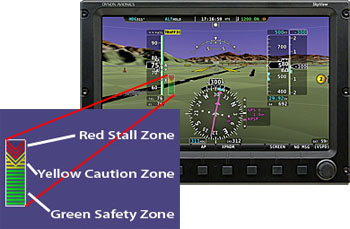



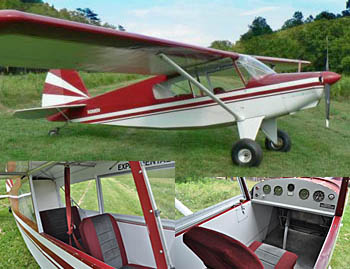
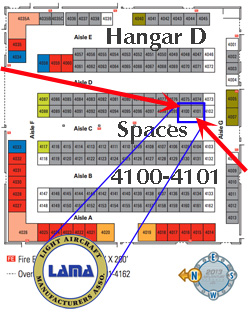


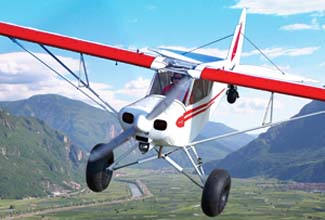



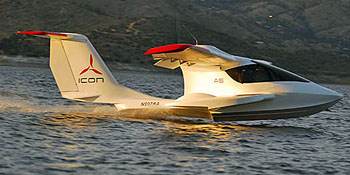



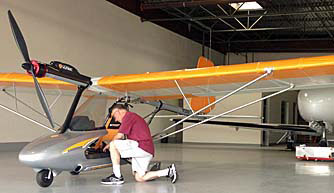

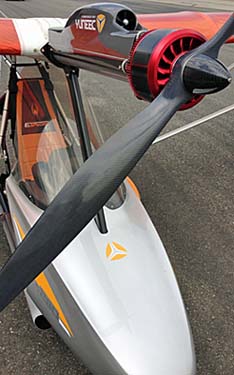





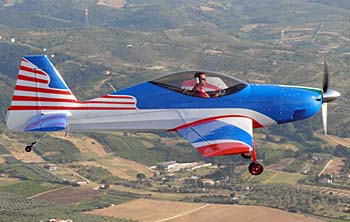 Snap! Crackle! Pop! It's not just for breakfast anymore. Among the vast array of light aircraft I am only aware of a few other single seat models ... Here's a
Snap! Crackle! Pop! It's not just for breakfast anymore. Among the vast array of light aircraft I am only aware of a few other single seat models ... Here's a 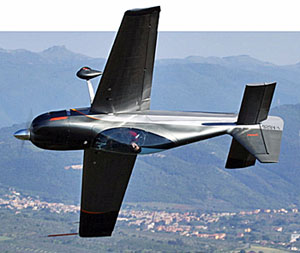 Aimed specifically at aerobatic flight, Snap was designed and developed by Fabio Russo, who is now the head of research and development for Tecnam Aircraft. Tecnam recently acquired rights to the Snap and will manufacture the airplane at its facilities in Naples and Capua, Italy.
Aimed specifically at aerobatic flight, Snap was designed and developed by Fabio Russo, who is now the head of research and development for Tecnam Aircraft. Tecnam recently acquired rights to the Snap and will manufacture the airplane at its facilities in Naples and Capua, Italy. 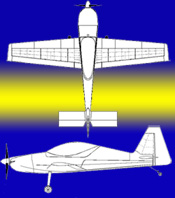 SportairUSA has been led by Bill Canino for many years and made a name as the importer of such well-liked models as the Sting and iCub. The company also sells seaplanes and performs a wide range of maintenance services from its home at the North Little Rock Municipal Airport (KORK). "Snap is fun to fly, competitive, and very inexpensive to own and operate compared to conventional aerobatic aircraft," observed Canino. He expects, "It will be certifiable as a production [or Special] Light-Sport (SLSA), Experimental Light-Sport (ELSA), or Experimental-Exhibition (EE)." Progress reports on testing and documentation of the airplane will be reported at the
SportairUSA has been led by Bill Canino for many years and made a name as the importer of such well-liked models as the Sting and iCub. The company also sells seaplanes and performs a wide range of maintenance services from its home at the North Little Rock Municipal Airport (KORK). "Snap is fun to fly, competitive, and very inexpensive to own and operate compared to conventional aerobatic aircraft," observed Canino. He expects, "It will be certifiable as a production [or Special] Light-Sport (SLSA), Experimental Light-Sport (ELSA), or Experimental-Exhibition (EE)." Progress reports on testing and documentation of the airplane will be reported at the 
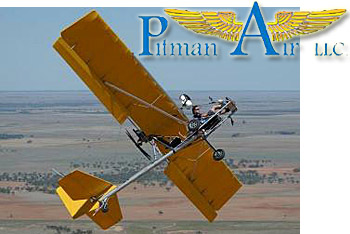 You might not be in the market for a super slow flying aircraft like Dragonfly that stalls at less than 20 mph. You might not care that Ed Pittman took the lead winning Special LSA approval on behalf of Australian businessman and hang gliding pioneer Bill Moyes and American Dragonfly designer Bobby Bailey. However, as a longtime hang gliding enthusiast, I can attest on behalf of many who enjoy soaring flight in hang gliders that Dragonfly is a critically important aircraft. The unusual aircraft was purpose designed to tow a hang glider aloft so it can be released — commonly at 2,000-2,500 feet and often right in a column of thermal lift — to allow it to achieve soaring flight without the benefit of a mountain from which to launch. One of the most successful aerotug airparks, called
You might not be in the market for a super slow flying aircraft like Dragonfly that stalls at less than 20 mph. You might not care that Ed Pittman took the lead winning Special LSA approval on behalf of Australian businessman and hang gliding pioneer Bill Moyes and American Dragonfly designer Bobby Bailey. However, as a longtime hang gliding enthusiast, I can attest on behalf of many who enjoy soaring flight in hang gliders that Dragonfly is a critically important aircraft. The unusual aircraft was purpose designed to tow a hang glider aloft so it can be released — commonly at 2,000-2,500 feet and often right in a column of thermal lift — to allow it to achieve soaring flight without the benefit of a mountain from which to launch. One of the most successful aerotug airparks, called 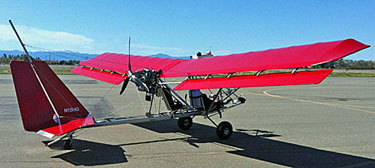 Most everyone in light aviation is now aware that FAA is out conducting audits of LSA manufacturers, with particular attention to new manufacturers or existing manufacturers offering a new model. Last year, FAA issued more guidance — in the form of the catchily-named 8130.2G Chg 1 directive — that defines more about what is a new model or manufacturer. All this was working, albeit at the rather leisurely pace of two audits a month (which would take several years to go through all 90+ manufacturers of LSA), until the federal sequestration came along. With their budget cut, FAA pulled back on all kinds of activities, most notably closing control towers (since altered by congressional action) and charging airshows like Sun 'n Fun and AirVenture to operate towers during their events. With this in mind I asked Ed if Dragonfly powered by the Rotax 912 was considered a new model. Ed replied, "Yes, they treated it as a new model." Ed previously gained approval for a
Most everyone in light aviation is now aware that FAA is out conducting audits of LSA manufacturers, with particular attention to new manufacturers or existing manufacturers offering a new model. Last year, FAA issued more guidance — in the form of the catchily-named 8130.2G Chg 1 directive — that defines more about what is a new model or manufacturer. All this was working, albeit at the rather leisurely pace of two audits a month (which would take several years to go through all 90+ manufacturers of LSA), until the federal sequestration came along. With their budget cut, FAA pulled back on all kinds of activities, most notably closing control towers (since altered by congressional action) and charging airshows like Sun 'n Fun and AirVenture to operate towers during their events. With this in mind I asked Ed if Dragonfly powered by the Rotax 912 was considered a new model. Ed replied, "Yes, they treated it as a new model." Ed previously gained approval for a 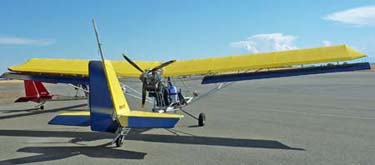 "We now offer Dragonfly 582 and Dragonfly 912 in both 80 and 100 horsepower models." He added, "We found a prop that generates 525 pounds of thrust on the 100-hp 912 which should satisfy most towing needs." He noted that this powerful thrust met technical specifications issued by Rotax Aircraft Engines and finished saying, "That's not easy to do with the ASTM requirements and props out there today. These props are made specially for our operation." I know Ed for many years through our mutual hang gliding interest and find him to be a serious, thorough person. The hang gliding community should be celebrating his accomplishment at gaining acceptance by FAA. An SLSA Dragonfly is available ready-to-fly for $67,222 for a 65-hp Rotax 582 model or $81,904 with 100-hp Rotax 912. An ELSA kit version of the latter is $66,964. You may want other accessories or services so
"We now offer Dragonfly 582 and Dragonfly 912 in both 80 and 100 horsepower models." He added, "We found a prop that generates 525 pounds of thrust on the 100-hp 912 which should satisfy most towing needs." He noted that this powerful thrust met technical specifications issued by Rotax Aircraft Engines and finished saying, "That's not easy to do with the ASTM requirements and props out there today. These props are made specially for our operation." I know Ed for many years through our mutual hang gliding interest and find him to be a serious, thorough person. The hang gliding community should be celebrating his accomplishment at gaining acceptance by FAA. An SLSA Dragonfly is available ready-to-fly for $67,222 for a 65-hp Rotax 582 model or $81,904 with 100-hp Rotax 912. An ELSA kit version of the latter is $66,964. You may want other accessories or services so 
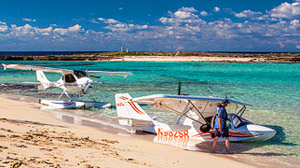

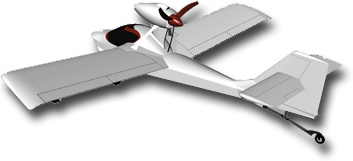
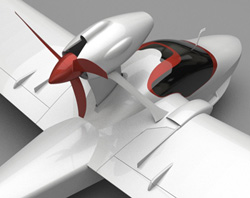


 Once upon a time the light aircraft industry announced new manufacturers and models at the rate of two, three, or even more every month ...for several years. As with every maturing industry before, this torrid pace had to slow. Yet the party isn't over, far from it. Contrarily, I am aware of several new projects in the works and we all know of some (Icon, Terrafugia, Lisa among others) where companies have been working on their designs for some years but they have yet to secure FAA approval as a Light-Sport Aircraft. Neither has GreenWing International, a new company announced this week though that may change quickly enough.
Once upon a time the light aircraft industry announced new manufacturers and models at the rate of two, three, or even more every month ...for several years. As with every maturing industry before, this torrid pace had to slow. Yet the party isn't over, far from it. Contrarily, I am aware of several new projects in the works and we all know of some (Icon, Terrafugia, Lisa among others) where companies have been working on their designs for some years but they have yet to secure FAA approval as a Light-Sport Aircraft. Neither has GreenWing International, a new company announced this week though that may change quickly enough.
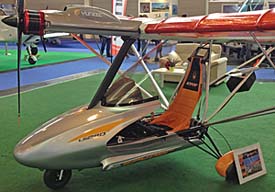 "Yuneec International, a world leader in electric power systems, is proud to announce the formation of GreenWing International, [which is] entirely focused on bringing the revolution of electric power to the global general aviation market," announced company CEO Tian Yu. Enthusiasts following electric powered aircraft development first saw Yuneec's e430 at AirVenture 2009. The Jiangsu-based company (just north of Shanghai) is very big in electric-powered radio controlled aircraft; their gyro-stabilized RC helicopters have sold in large numbers. Yuneec will continue to focus on developing technologies for electric motors and power systems, but GreenWing said it will handle production of the eSpyder and e430 electric aircraft. Since the first flights of its electric powered planes in 2009, Yuneec has been advancing its electric propulsion technologies, and all GreenWing aircraft will be powered by Yuneec electric propulsion systems.
"Yuneec International, a world leader in electric power systems, is proud to announce the formation of GreenWing International, [which is] entirely focused on bringing the revolution of electric power to the global general aviation market," announced company CEO Tian Yu. Enthusiasts following electric powered aircraft development first saw Yuneec's e430 at AirVenture 2009. The Jiangsu-based company (just north of Shanghai) is very big in electric-powered radio controlled aircraft; their gyro-stabilized RC helicopters have sold in large numbers. Yuneec will continue to focus on developing technologies for electric motors and power systems, but GreenWing said it will handle production of the eSpyder and e430 electric aircraft. Since the first flights of its electric powered planes in 2009, Yuneec has been advancing its electric propulsion technologies, and all GreenWing aircraft will be powered by Yuneec electric propulsion systems.
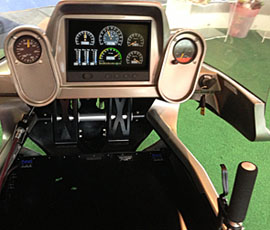 Since it showed the e430 four years ago, Yuneec acquired the design rights to the former
Since it showed the e430 four years ago, Yuneec acquired the design rights to the former 
